Oxford
About Andrew Cusack
 Writer, web designer, etc.; born in New York; educated in Argentina, Scotland, and South Africa; now based in London.
Writer, web designer, etc.; born in New York; educated in Argentina, Scotland, and South Africa; now based in London. read more
News
Blogs
Reviews & Periodicals
Arts & Design
World
France
Mitteleuropa
Knickerbockers
Argentina
The Levant
Africa
Cape of Good Hope
Netherlands
Scandinavia
Québec
India
Muscovy
Germany
Academica
Canterbury Gate
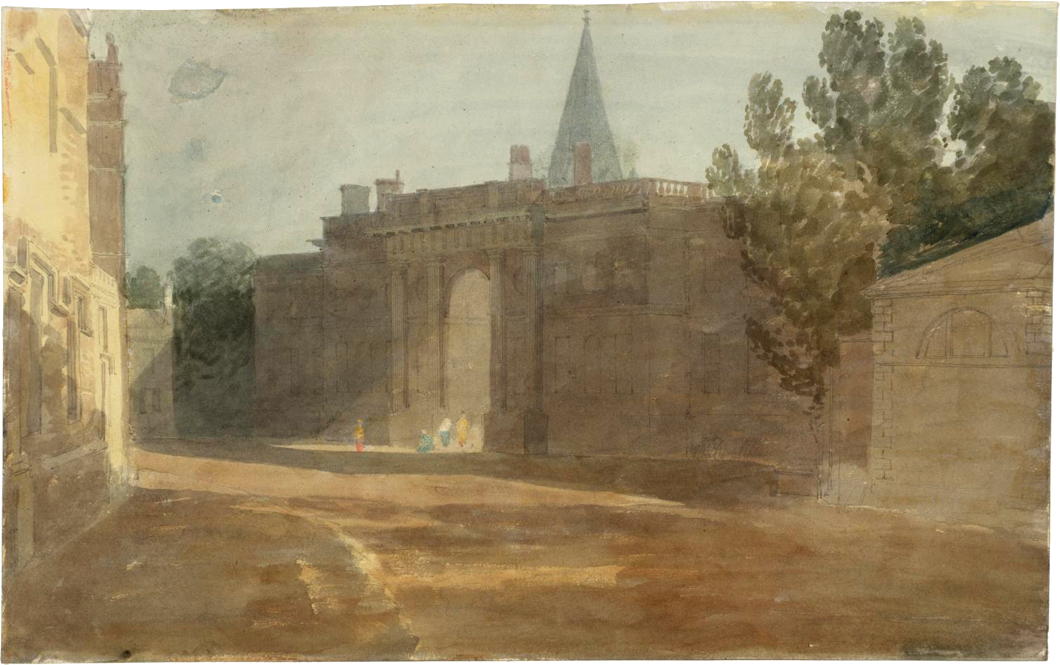
10 in. x 16¼ in., 1799; Tate Collection
Turner’s painting captures Christ Church’s Canterbury Gate from Oriel Square. (As it happens, this is Canterbury Gate at Christ Church in Oxford and, conversely, there is a Christ Church Gate at Canterbury in Kent.)
Given the greenery of the vegetation, this is almost certainly not the work that inspired Betjeman to write his winter poem ‘On an Old-Fashioned Water-Colour of Oxford’:
A winter sunset on wet cobbles, where
By Canterbury Gate the fishtails flare.
Someone in Corpus reading for a first
Pulls down red blinds and flounders on, immers’d
In Hegel, heedless of the yellow glare
On porch and pinnacle and window square,
The brown stone crumbling where the skin has burst.
A late, last luncheon staggers out of Peck
And hires a hansom: from half-flooded grass
Returning athletes bark at what they see.
But we will mount the horse-tram’s upper deck
And wave salute to Buols’, as we pass
Bound for the Banbury Road in time for tea.
The Sultan Nazrin Shah Centre
Níall McLaughlin Architects at Worcester College, Oxford
WORCESTER is one of the most spacious and scenic of Oxford’s colleges. The classical symmetry of its entrance terminates the view down the gentle curve of Beaumont Street from the Ashmolean Museum. The twenty-six acres of its grounds are pastoral, with lake, gardens, and the broad expanse of a cricket pitch.
Craftily inserted into this arcadia is the Sultan Nazrin Shah Centre designed by Níall McLaughlin Architects. Collegiate work is familiar to this firm, whose new library at Magdalene College, Cambridge, has won them this year’s Stirling Prize, and the Shah Centre provides new useful facilities for the college without giving it the middle finger.
It is named in gratitude to the generosity of an old boy of the college, HRH Nazrin Ali Shah of Perak, who delights in the title of Sultan, Sovereign Ruler, and Head of the Government of Perak, the Abode of Grace, and its dependencies. Judging by the outcome — itself shortlisted for a Stirling Prize in 2018 — I think he spent his money well.

Tempting though it might be to have a gentle wander through the grounds of the college first, the Shah Centre is best approached through the humble entrance lodge nestled in the corner of the L-shaped Worcester Place north of the college.

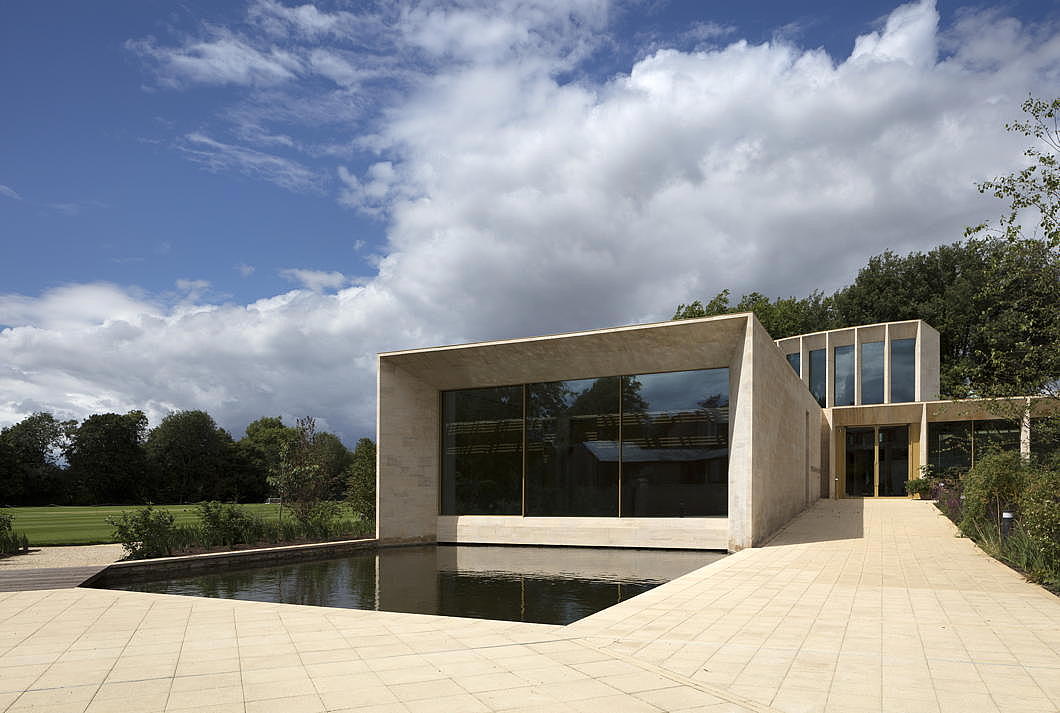
You are led to a little piazza — the Sainsbury Courtyard — framed by a pair of just-below-foot-level diamond-shaped shallow ponds of Kahn-ian geometry. (They are actually a tiny extension of the college lake.) The broad expanse of cricket pitch beyond, connected by a flat wooden bridge segmenting the two diamond ponds, is alluring. But off at a 45-degree-angle on the right, the entrance to the Shah Centre bids the visitor on.
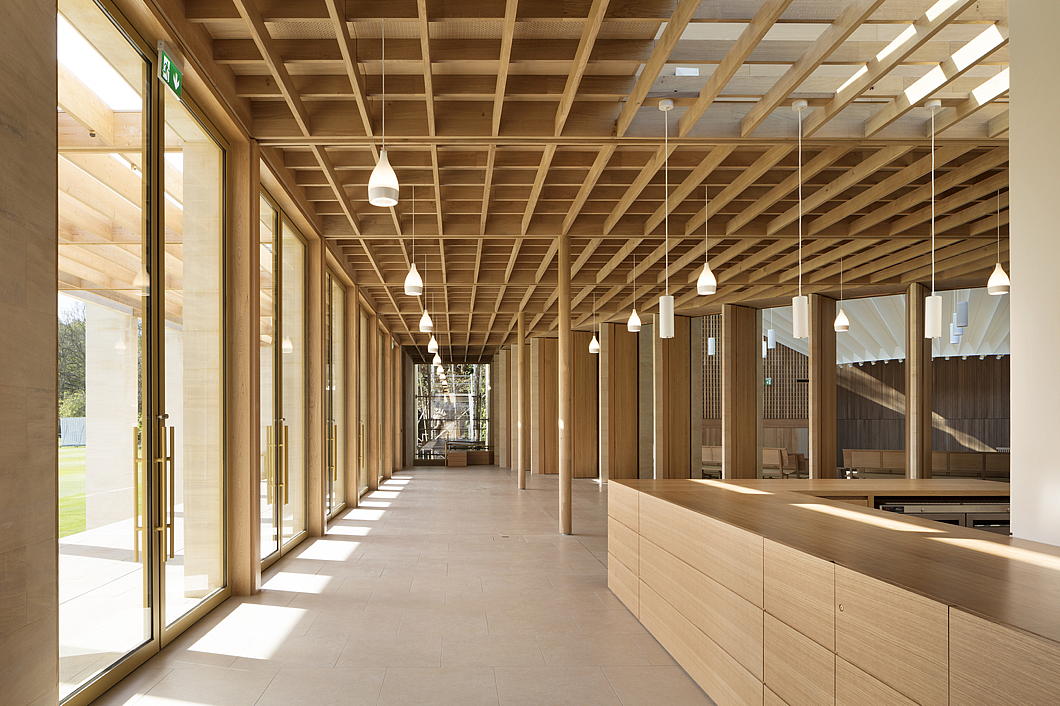
Beyond the limestone cladding you move indoors to a sea of light-treated oak, in the thin supporting columns of the one-storey entrance hall curving around the arc of the lecture theatre and in the trelliswork ceiling.

To the left, the dance studio looks out onto the pools through three giant panes of floor-to-ceiling glass.
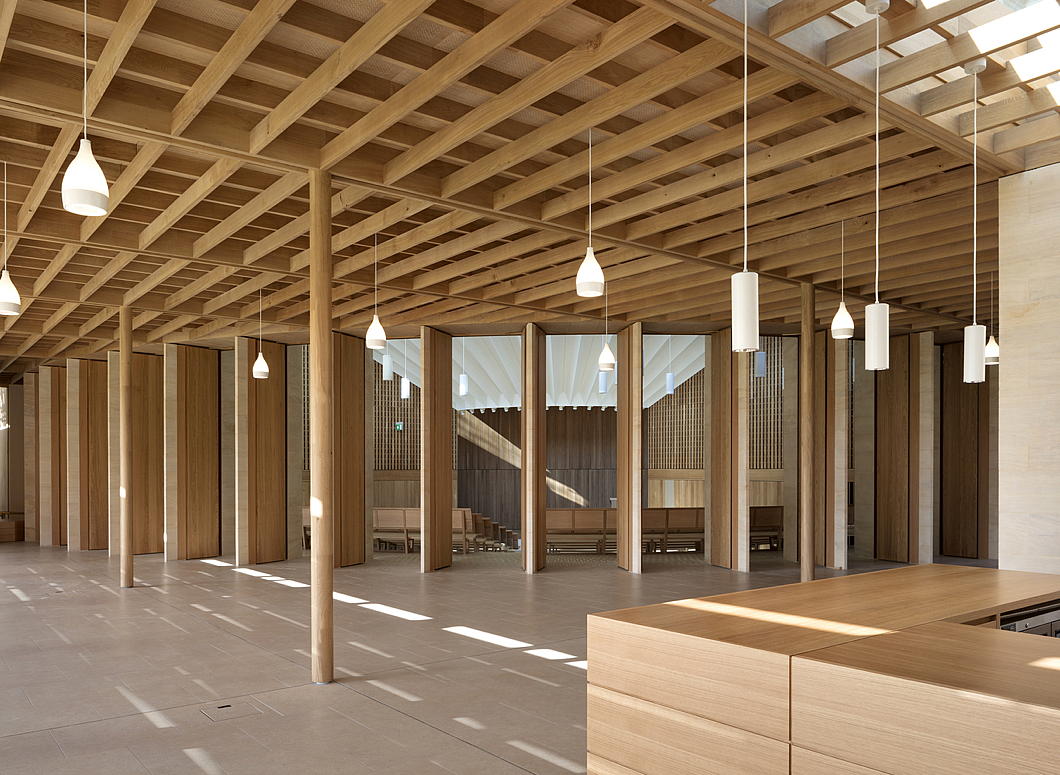
To the right, a small bar can double as a registration desk.
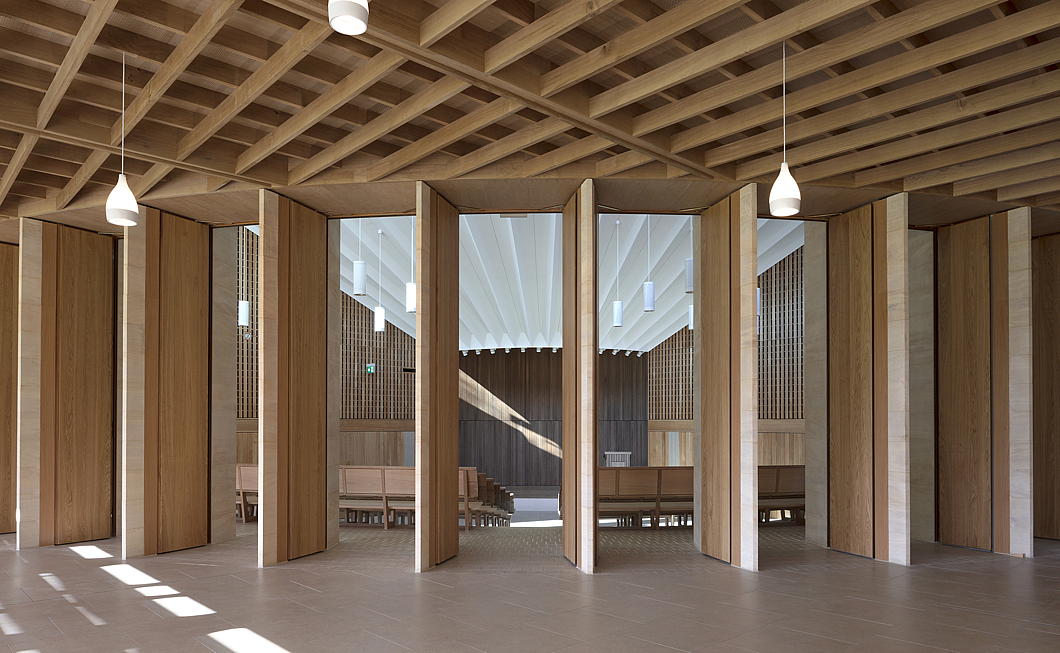
The lecture theatre seats 170 and is accessed through a curve of wooden slats that hide panels that can swing out if closing the space is necessary.
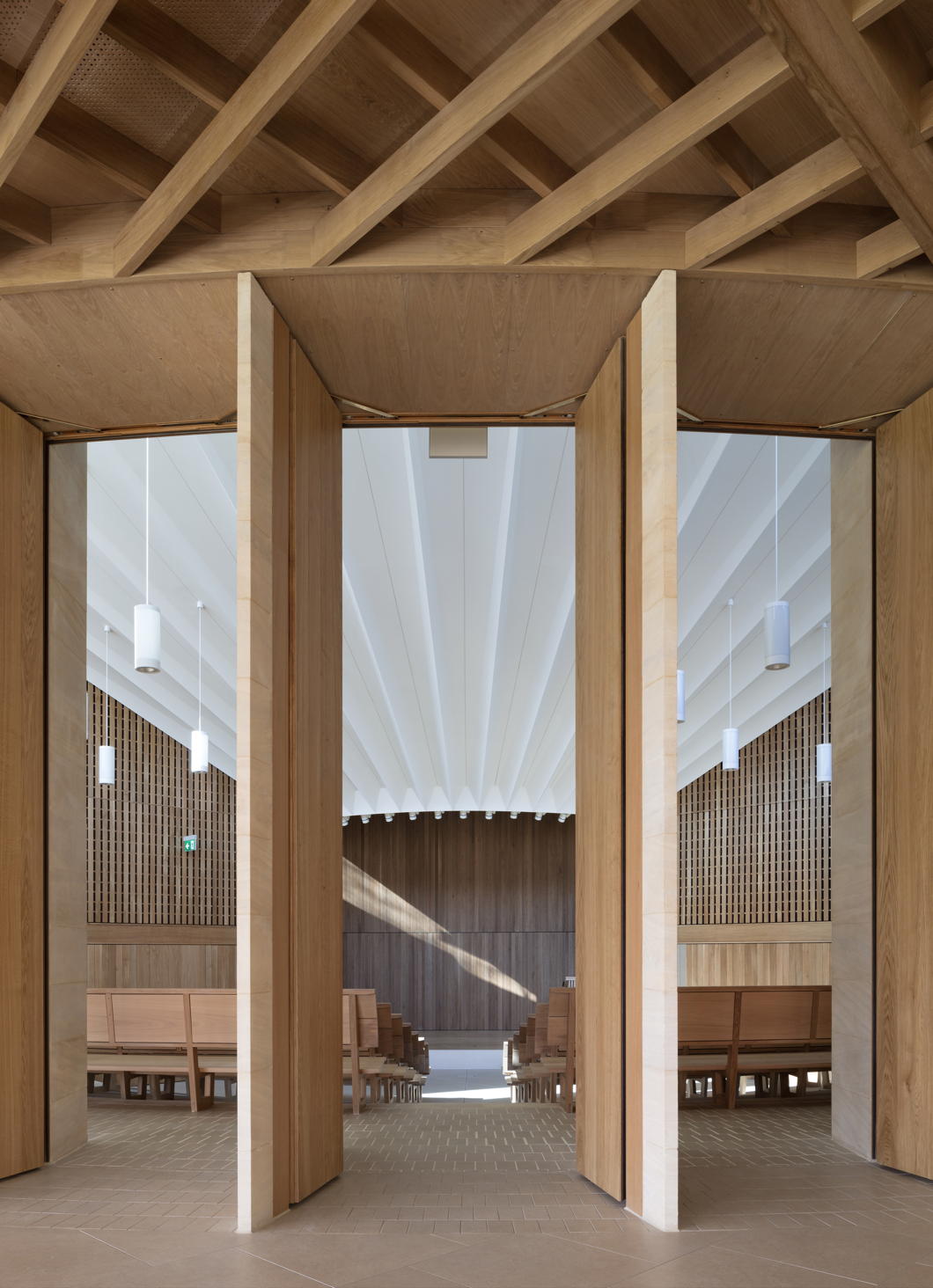
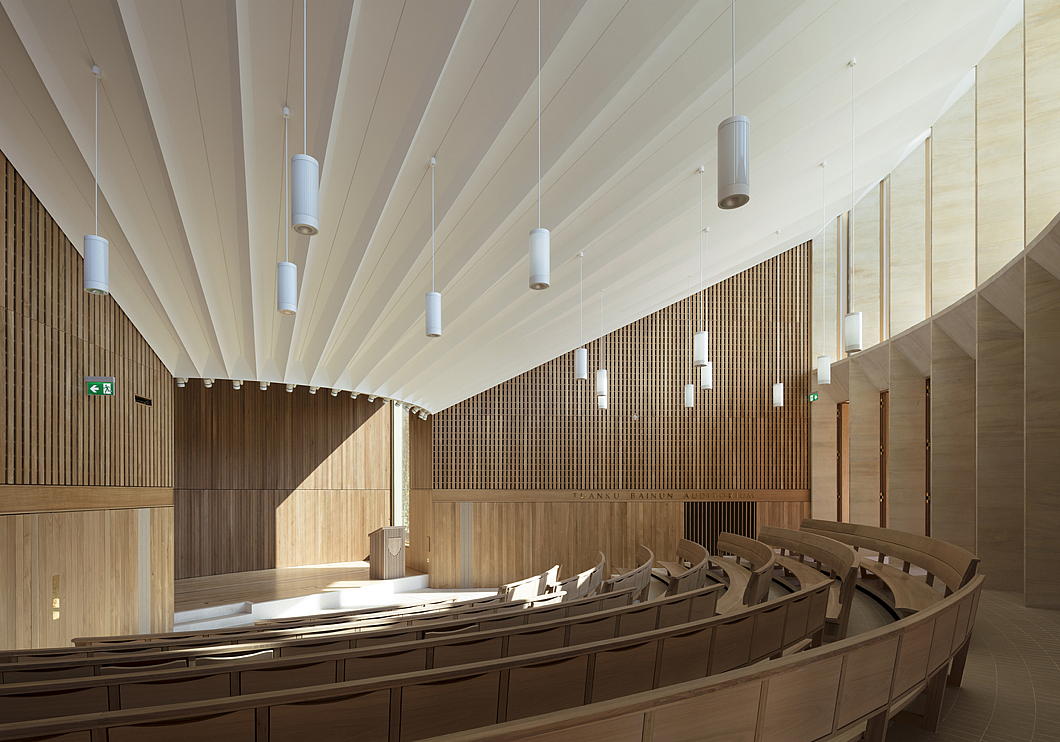
Auditoria with ceilings sloping down toward the stage usually feel cramped but here the ceiling is arranged in sharp corrugations (like the flanges of the Gonbad-e Qabus) which capture the light from the clerestory behind.
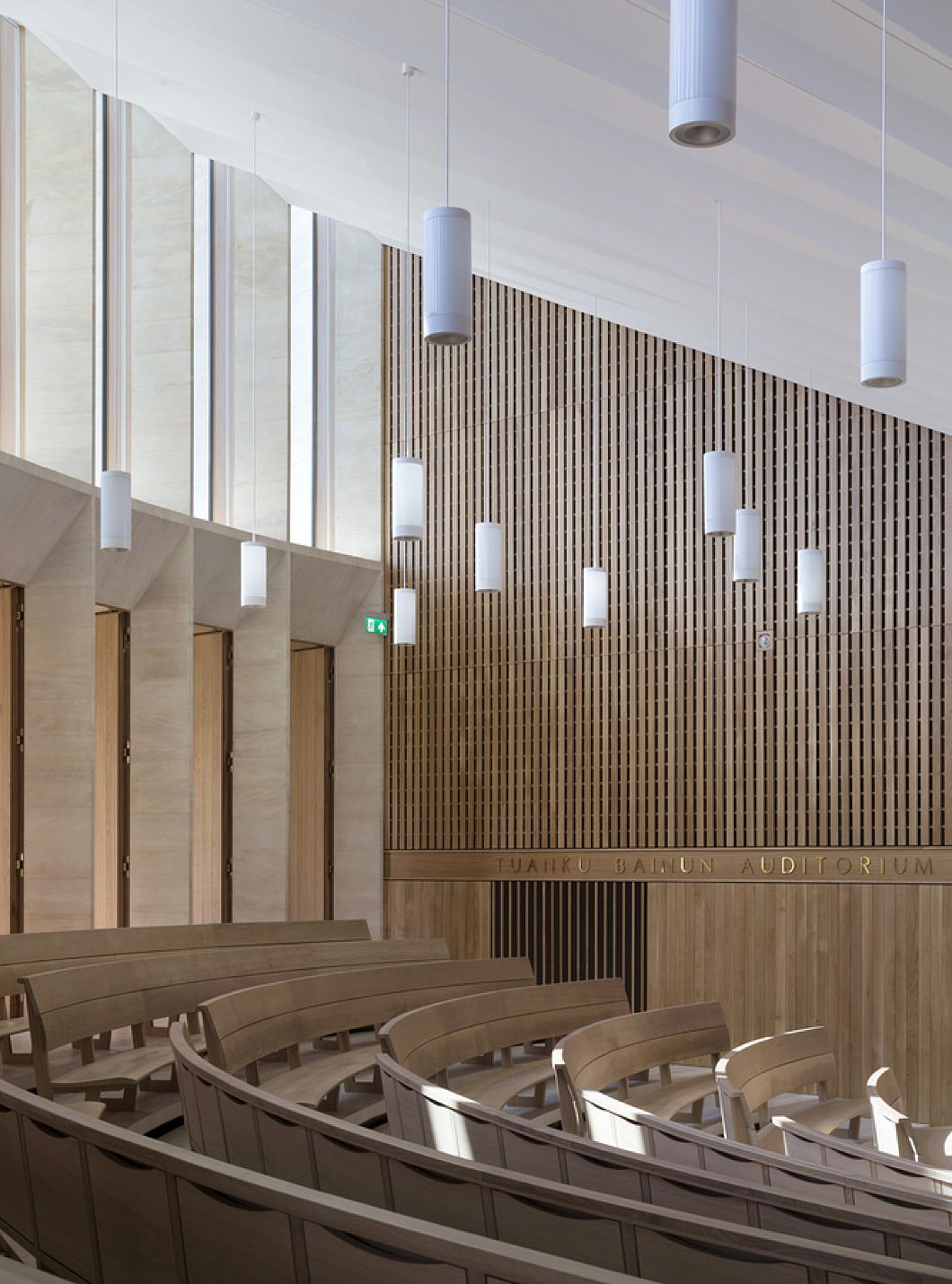
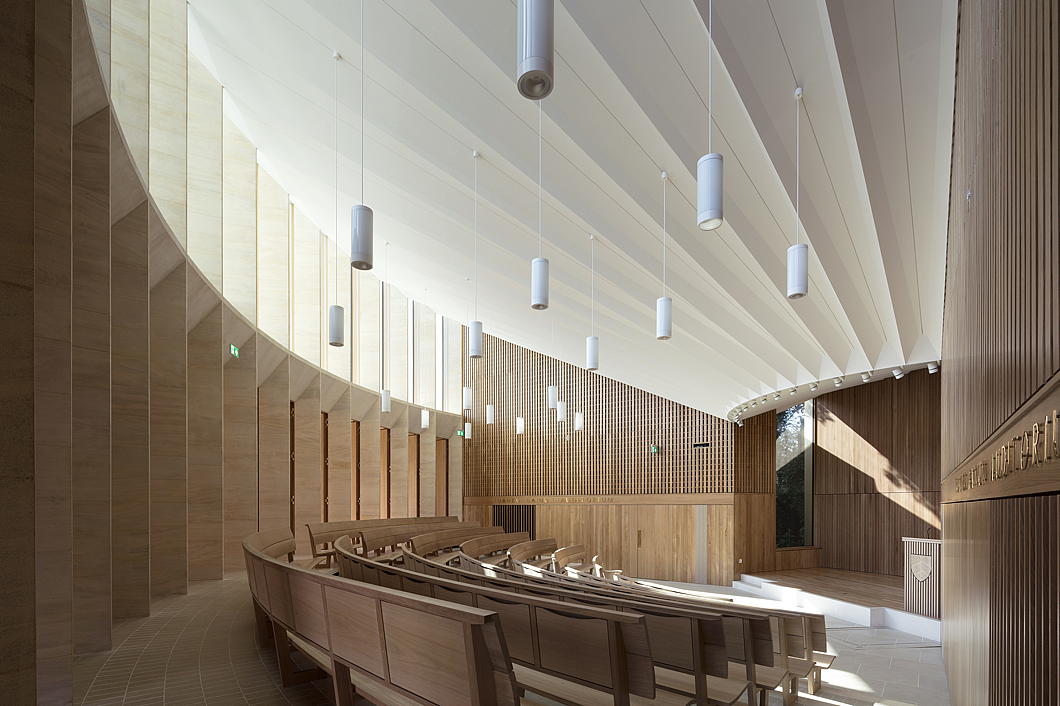
The feeling is one of spaciousness: rather than facing downwards they are like rays of the sun reaching outwards and up. Instead of wings offstage, there are tall windows of a single sheet of glass flanking, offering natural side light.
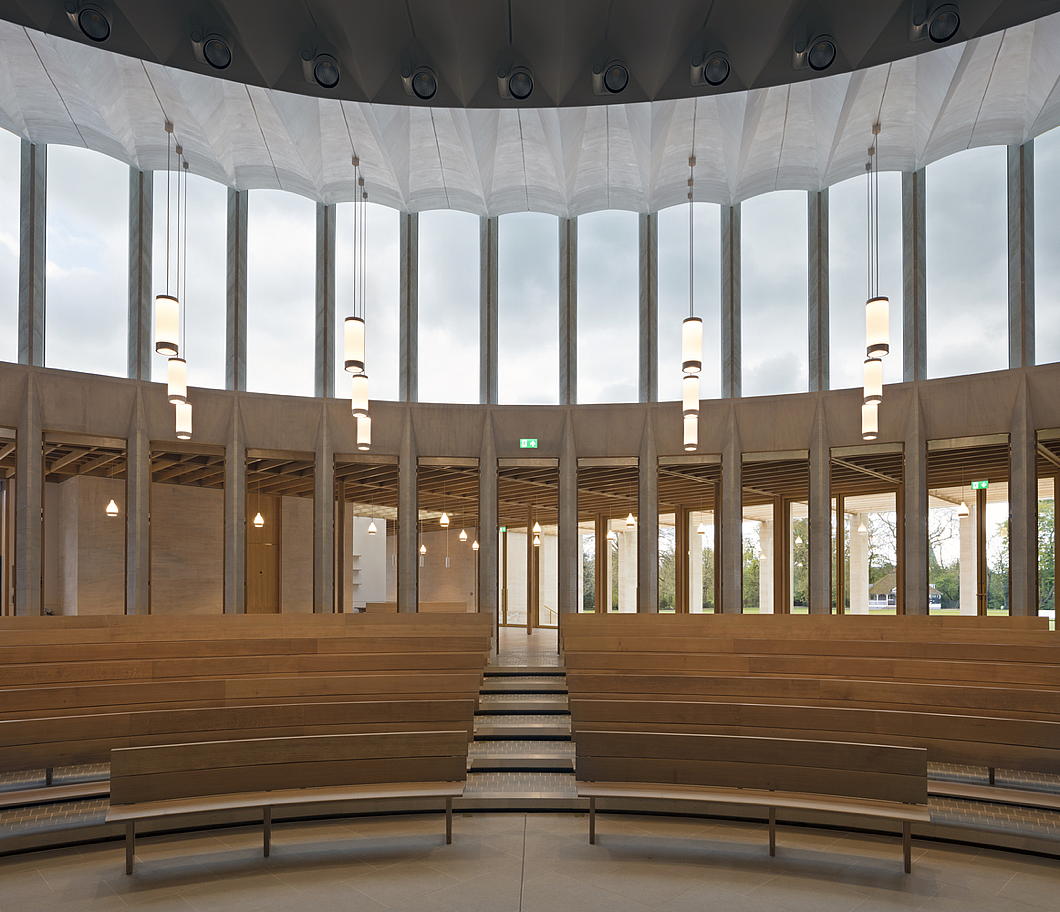
The view from the stage is even better, looking out at the gentle curve of clear windows breaking at near-half-way, dividing the anterior spaces below from the open skies above.
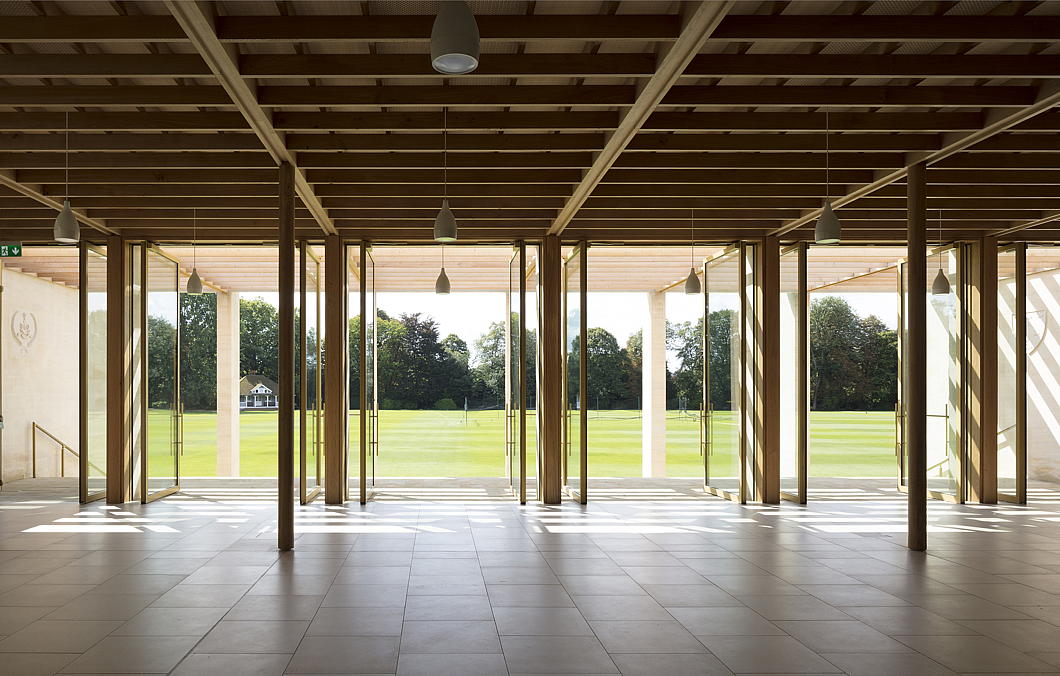
Straight out from the auditorium is the terrace with its steps flowing gently down to the field beyond.
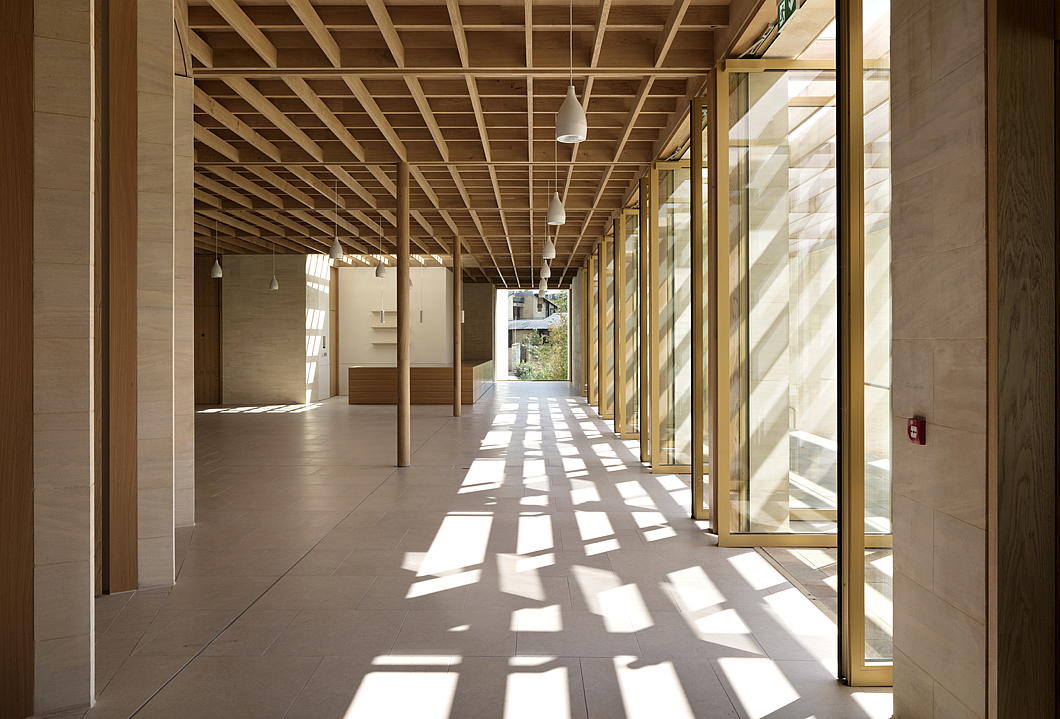
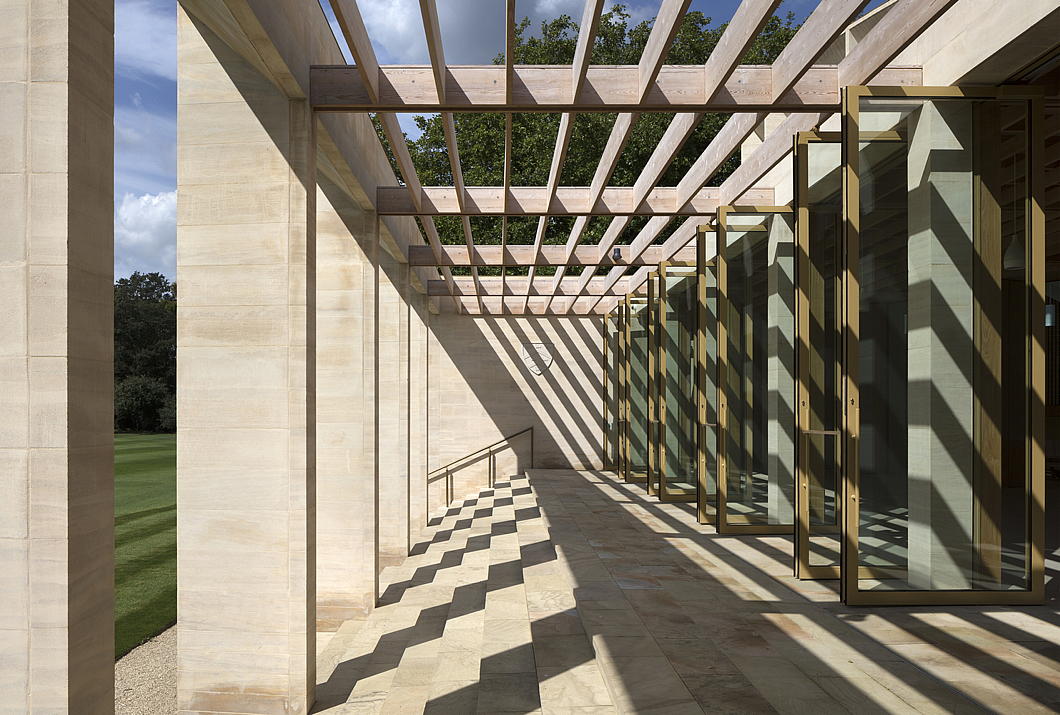
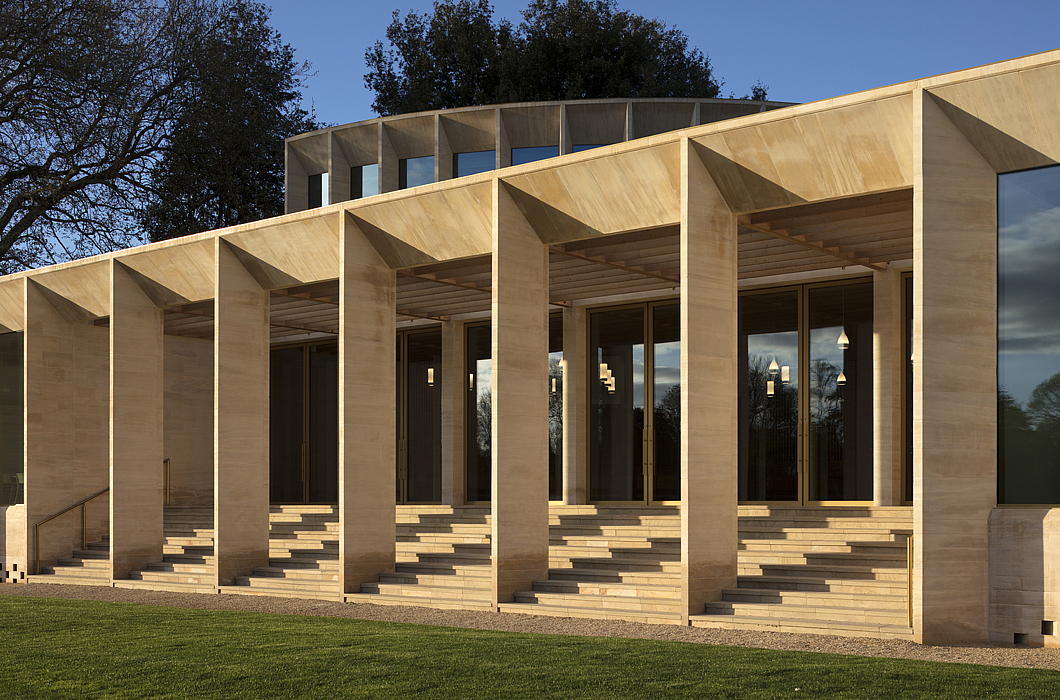
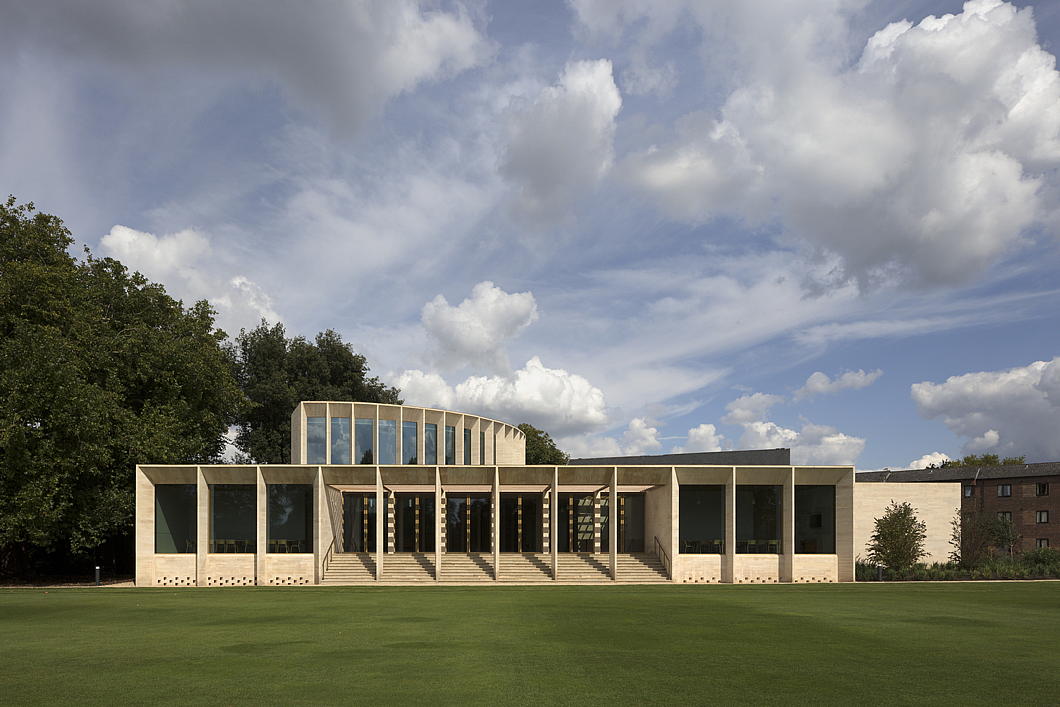
It is from the cricket ground that we get the best view of the Shah Centre. The lines are elegant, and there’s a hint of the better architects from Italy’s fascist era — Pagano or Terragni, not Piacentini. The easy movement of space and light, with a gentle breeze rolling off the green.
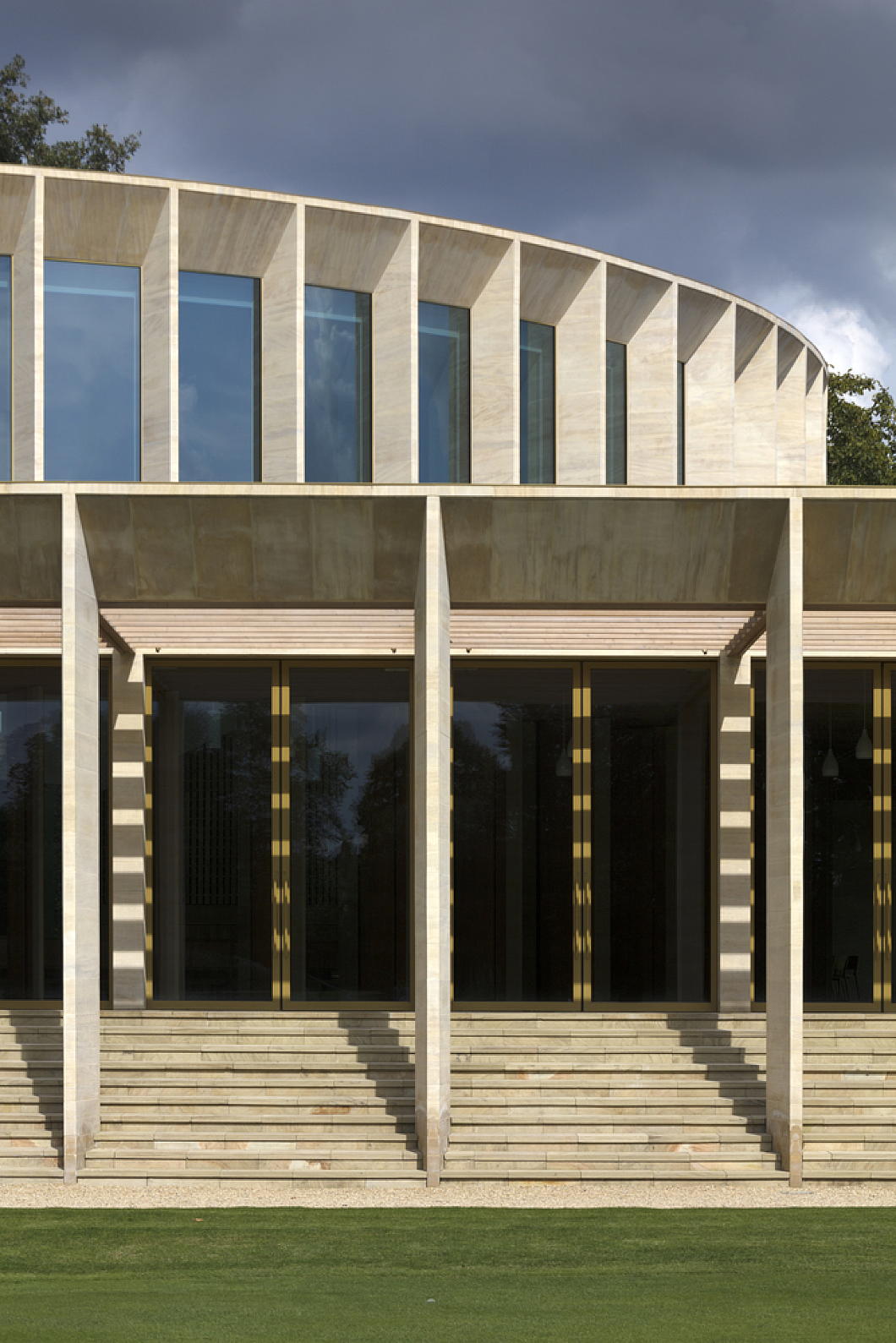
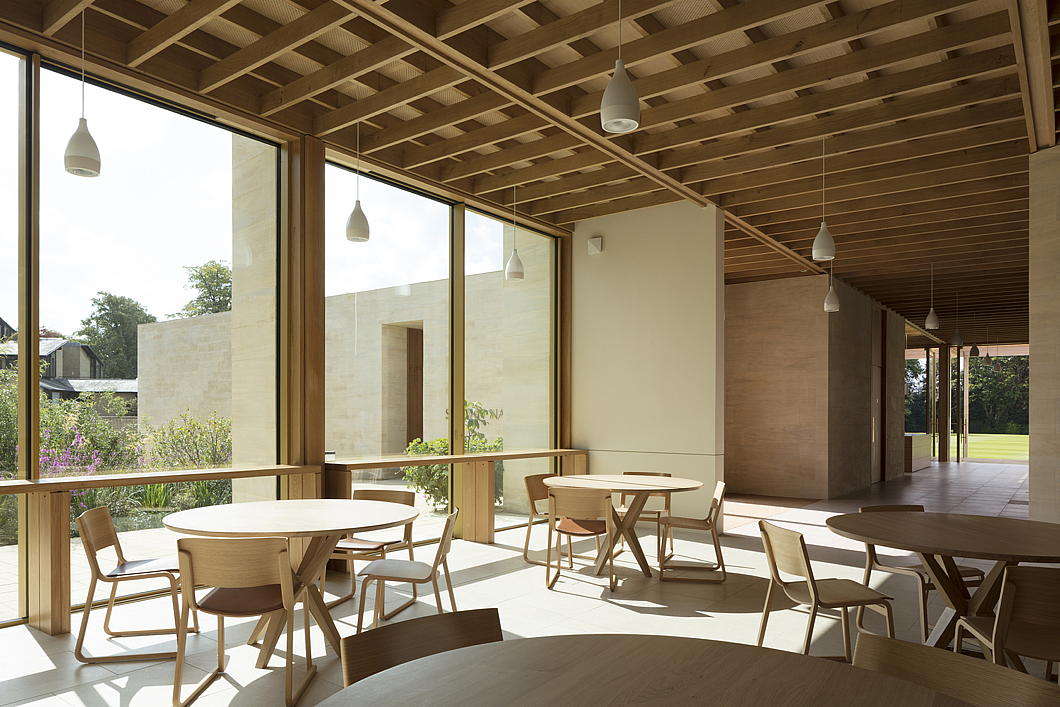
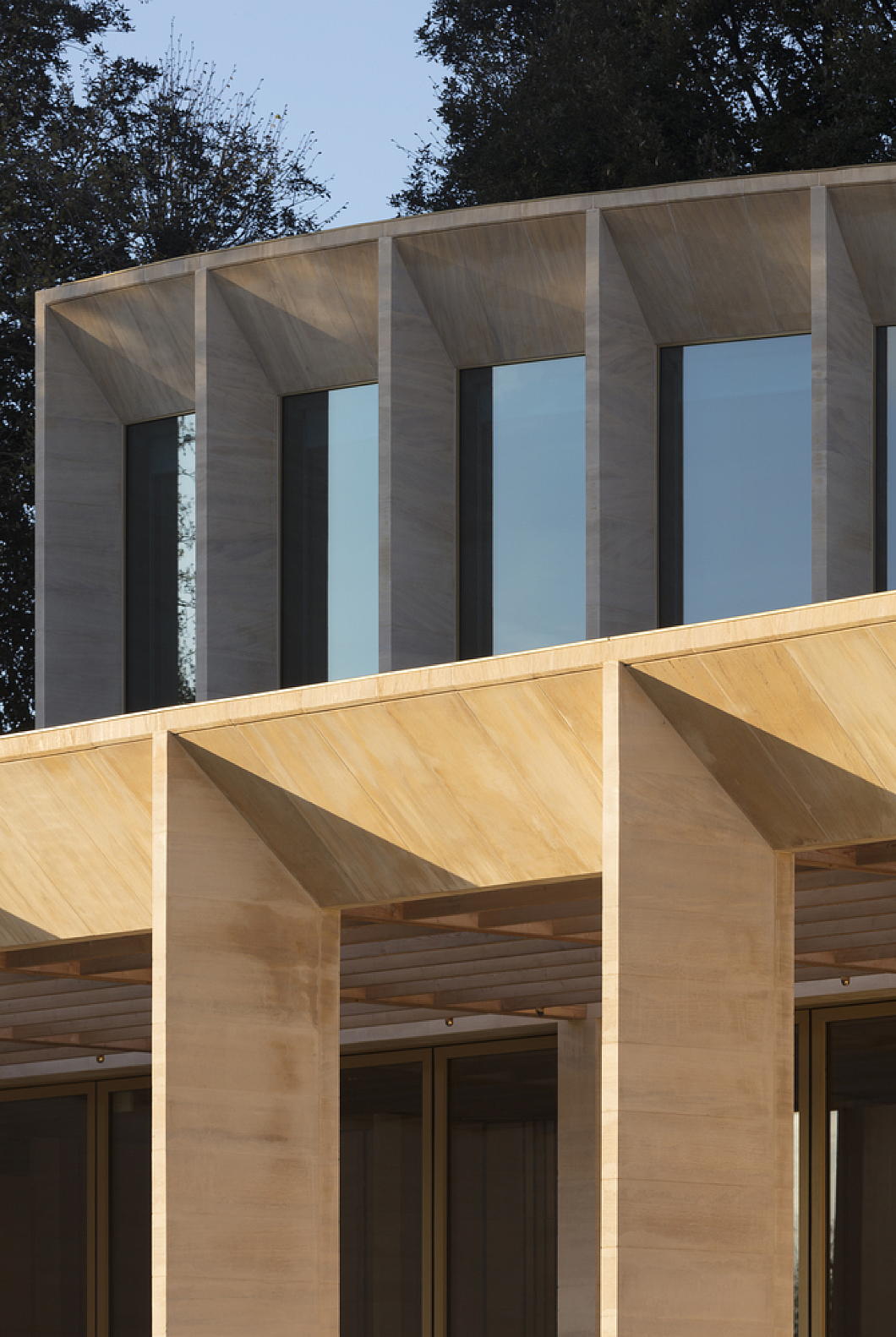
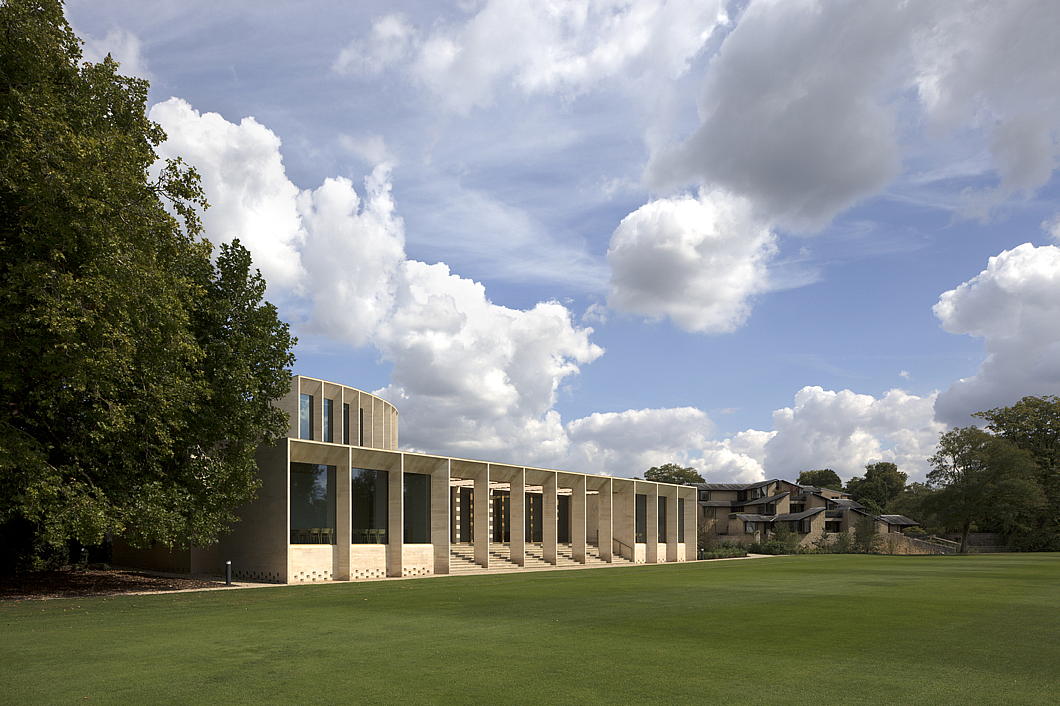
The architectural genius of the Oxford college as a type is that it allows for the magnificent to be completed on a humane scale for an intimate community of students, scholars, and academics. Níall McLoughlin’s skill at achieving this in a modern idiom is what makes the accolades he accrues — fickle gifts at the best of times — so justified in his case.
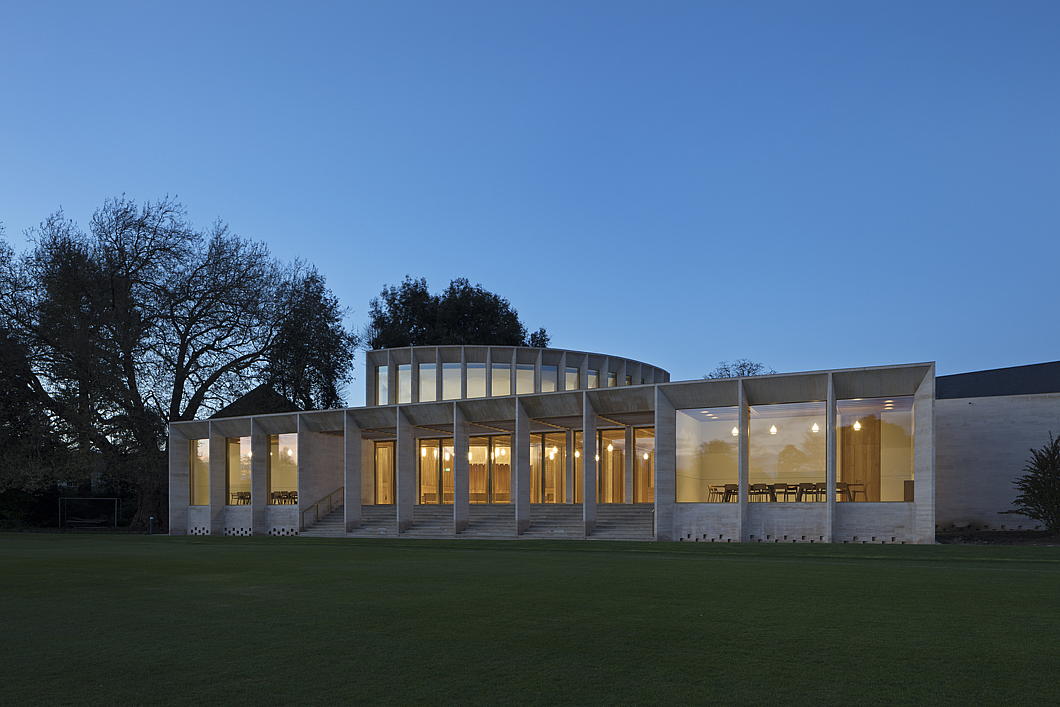
Merton
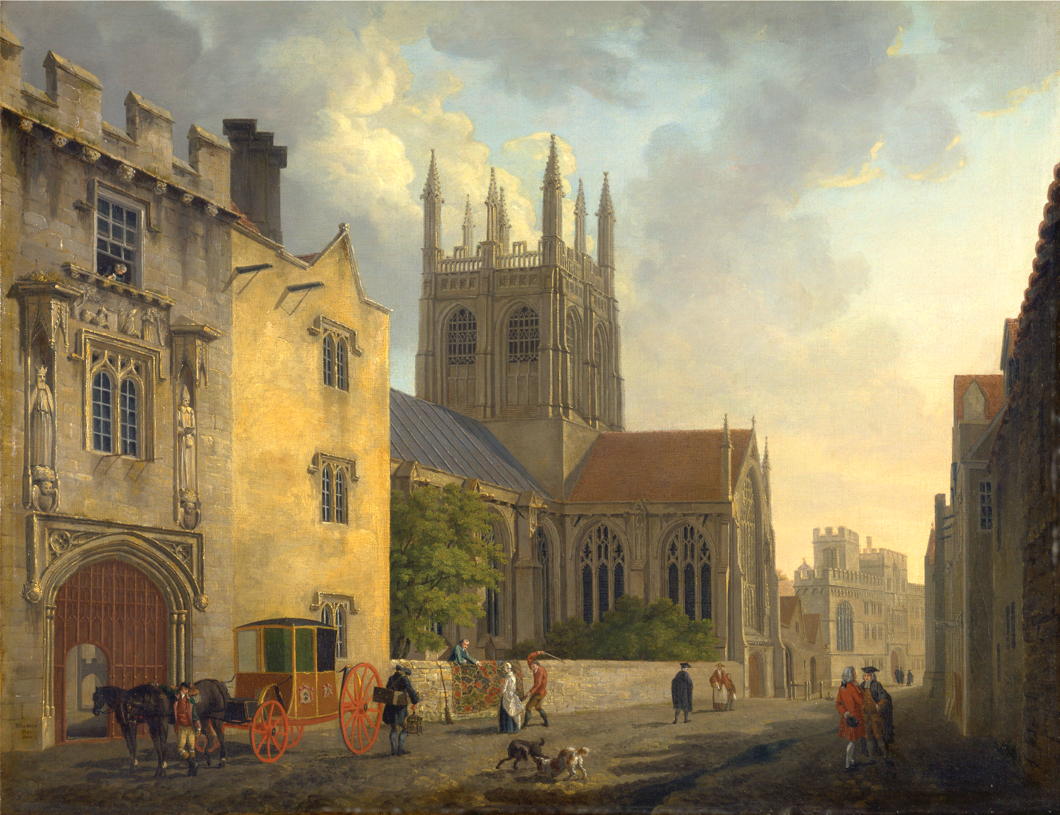
The ‘House or College of Scholars of Merton in the University of Oxford’ — more commonly called Merton College — is one of the smaller colleges in Oxford, located right next door to lovely little Corpus.
Aside from rendering the architecture well, townscapes from the eighteenth century often give delightful little hints of city life. Michael Rooker (1746–1801) painted this scene of Merton College from its eponymous street in 1771, and the view today is hardly changed at all.
One of my favourite cityscapes is Canaletto’s view of the back end of Downing Street looking towards the old Horse Guards which you can pop into the Tate and see thanks to the generosity of Lord Lloyd-Webber. Incidentally, both scenes depict carpets being hung out for beating.
If you love the capital of the Netherlandosphere I recommended adding to your library Kijk Amsterdam 1700-1800: De mooiste stadsgezichten (‘See Amsterdam 1700-1800: The Most Beautiful Cityscapes’), the well-produced catalogue of the 2017 exhibition of the same name at the Amsterdam City Archives which includes 300 illustrations in full colour.
It’s high time the Museum of Oxford or the Ashmolean — or anyone really — put together a similar exhibition of Oxford cityscapes from the same century.
Incidentally, it was in Merton Field as a teenager that I played my first game of cricket. Who would have guessed then that eighteen years later your humble and obedient scribe would be facing the Vatican on the field of battle in the same sport? (We lost.)
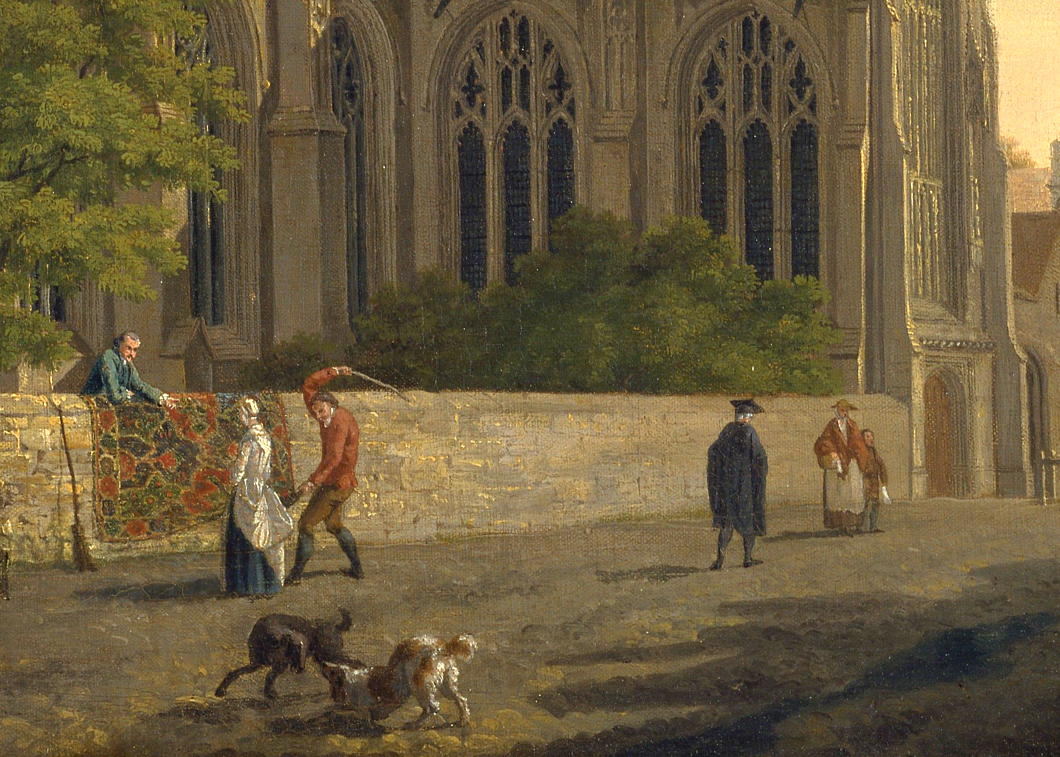
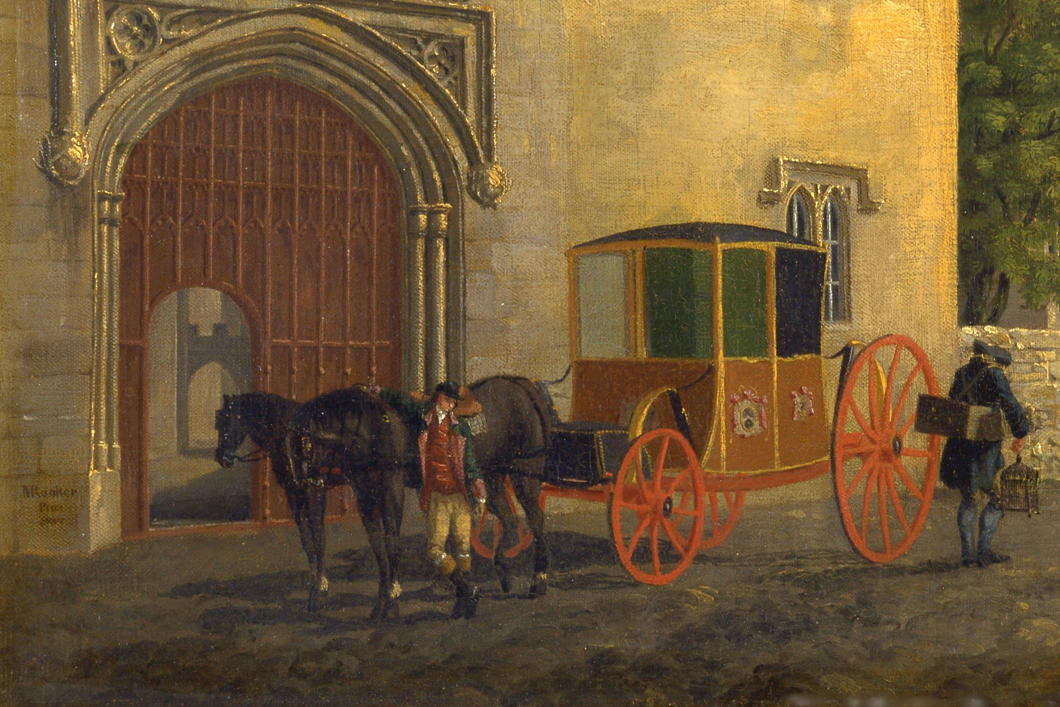
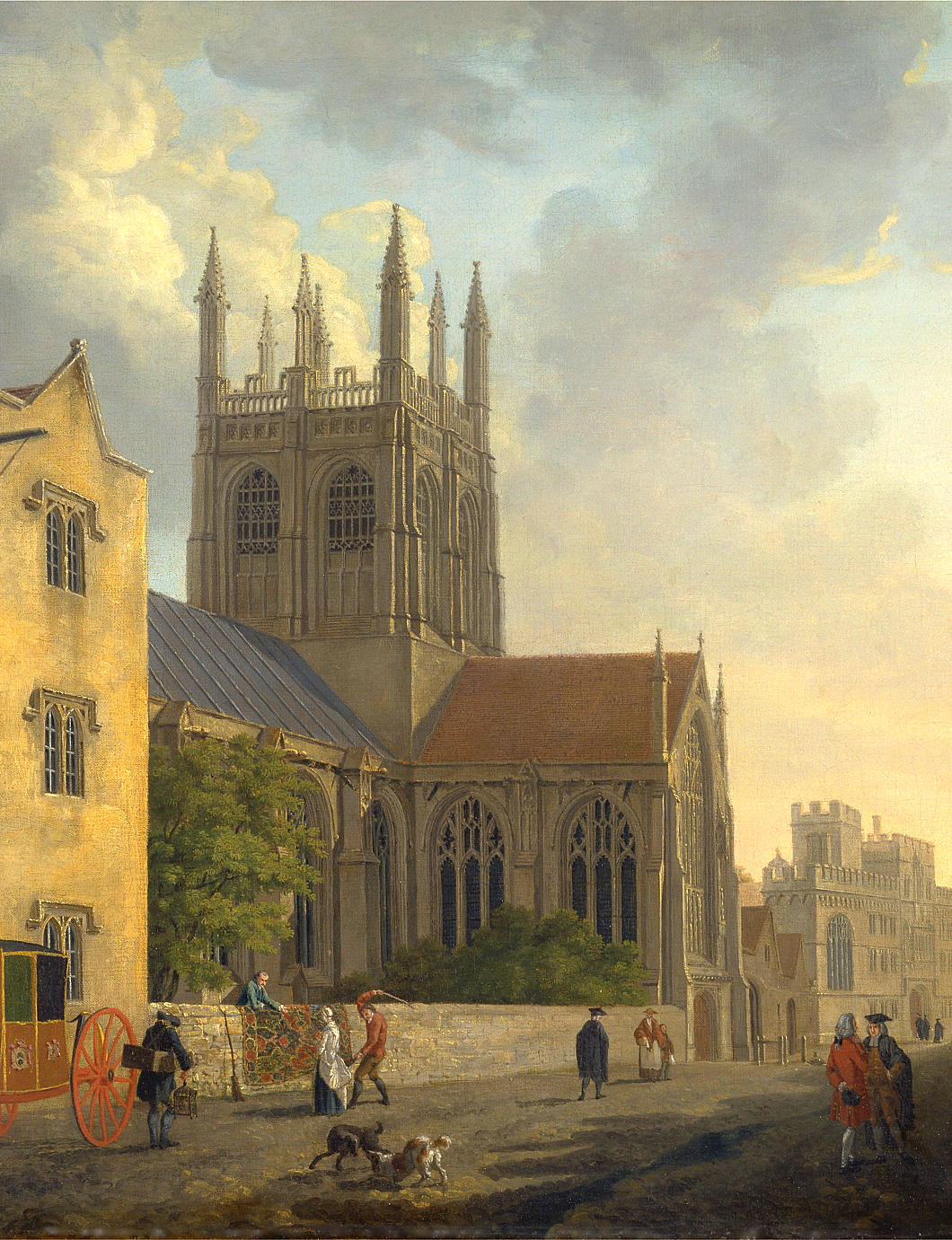
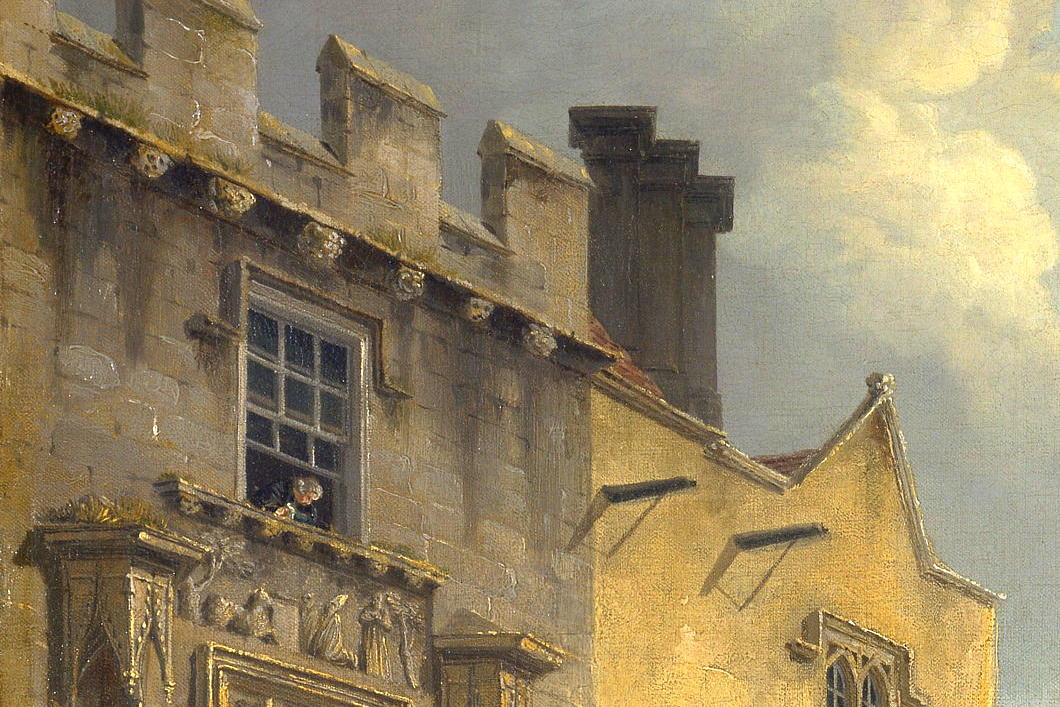
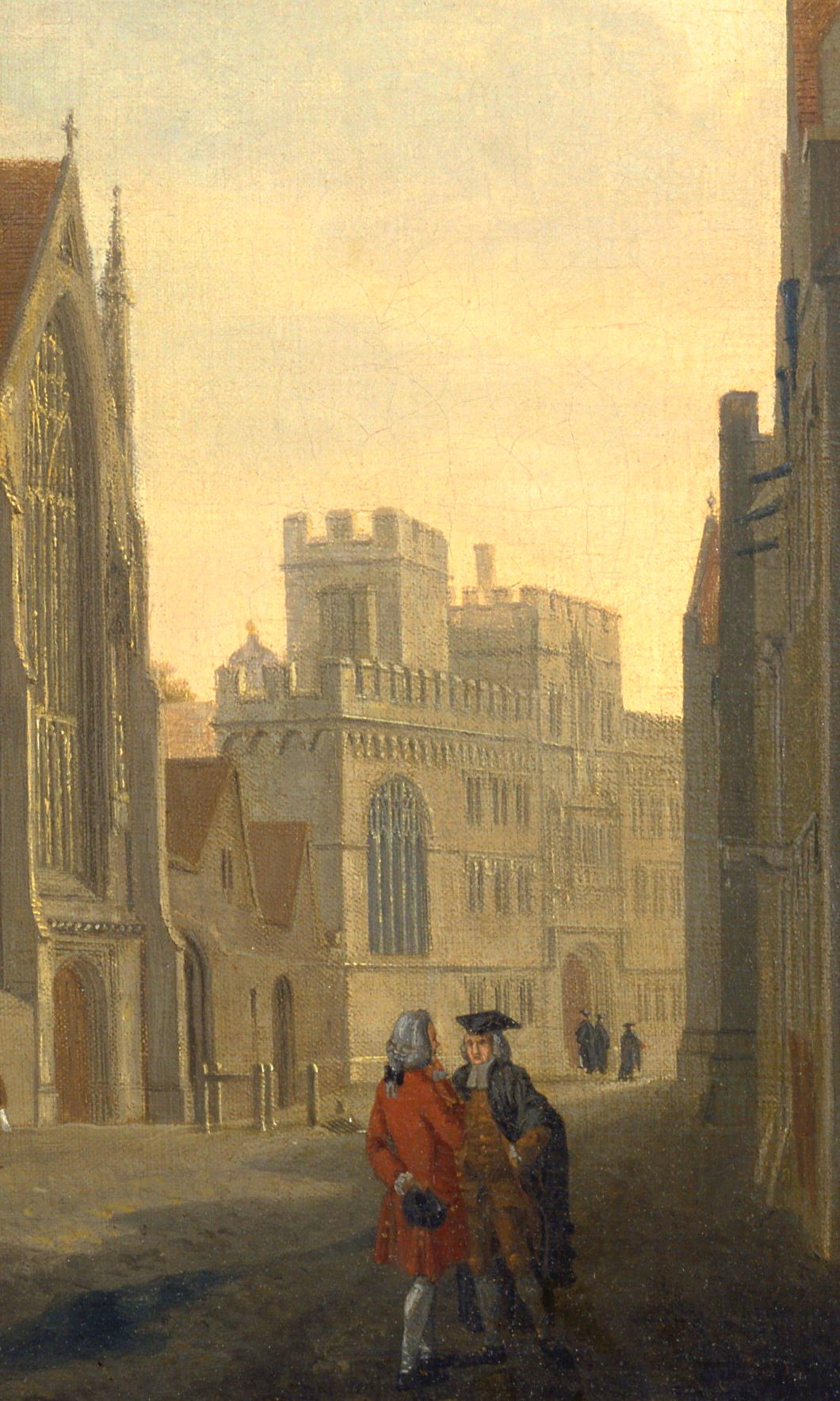
How to deal with ‘Direct Action’
A lesson from the experienced generation of not so long ago
BRITONS have a habit of being slow to move initially but they do get their act in order sooner or later — and usually in time to prevent disaster. Many in the metrop. have been damned irritated that the police seemed impotent when the fascist death cult “Extinction Rebellion” first reared its ugly head.
“XR” prevented working-class Londoners from getting to work on the Underground and seized bridges to publicise their claim that — despite global agricultural yields being higher than ever before in human history — we are somehow all going to be starving in a few years’ time due to “climate catastrophe”.
Nonetheless, having returned from Guernsey this morning, I find the streets of London pleasantly filled with the flying squads of the Metropolitan Police. The boys in blue are moving about in rapid response units, ready to deploy immediately whenever and wherever the Extincto-Nazis rear their ugly heads, thus keeping the streets open to all comers (bar those with nefarious designs of un-civic disorder).
“XR” are not the first to threaten (nor to deliver) “direct action”, but I was heartened when a friend shared this splendid example of how to deal with irate students allegedly delivered by the Warden and Fellows of Wadham College, Oxford, in 1968:
Dear Gentlemen,
We note your threat to take what you call ‘direct action’ unless your demands are immediately met.
We feel it is only sporting to remind you that our governing body includes three experts in chemical warfare, two ex-commandos skilled with dynamite and torturing prisoners, four qualified marksmen in both small arms and rifles, two ex-artillerymen, one holder of the Victoria Cross, four karate experts and a chaplain.
The governing body has authorized me to tell you that we look forward with confidence to what you call a ‘confrontation,’ and I may say, with anticipation.
This was less than a quarter-century after the victory of the Second World War, so Wadham could call upon an experienced gang to fill the ranks of its fellowship in those days.
I suppose Maurice Bowra was Warden of Wadham at this time. While a renowned buggerer, he did manage to die with a knighthood, a CH, and the Pour le Mérite (civil class) — which is not a bad innings all things considered.
Corpus Christi
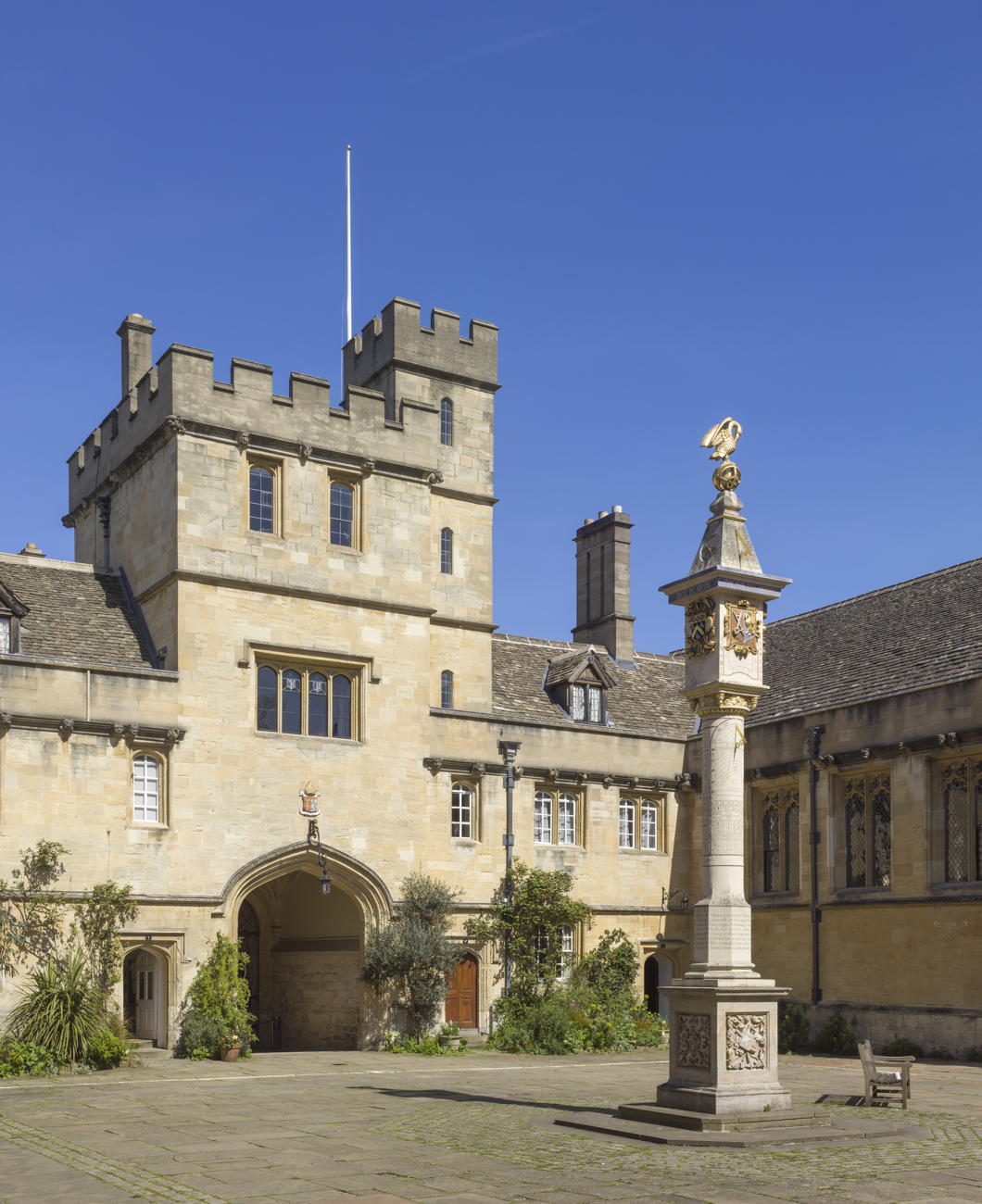
It seems silly to let today’s feast pass without mentioning Corpus Christi College at the University of Oxford. It’s one of the smaller colleges, with about 250 undergraduates and a hundred or so postgraduates studying in its charming quadrangles.
Founded in 1517, Erasmus hailed its library as inter praecipua decora Britanniae, “among the chief ornaments of Britain”, and Cardinal Pole — the last legitimate Archbishop of Canterbury — was a founding fellow.
More recently, John Keble became an undergraduate there in 1806, before accepting a fellowship at Oriel in 1811, and having Keble College founded and named after him a few years after his death in 1866.
Architecturally, Corpus’s most remarkable feature is the Pelican Sundial, which is actually a column dating from 1579 that contains twenty-seven different sundials. It was most recently restored in 2016, and copies exist at Princeton and Pomfret.
The terrace atop the new auditorium affords an excellent view of the former priory of St Frideswide, now used by the Protestants as Christ Church. (more…)
Trad Flag

When a cardinal dies his galero is suspended aloft above his tomb to slowly rot and wither away, thus showing the eventual fate of all earthly things. Unlike galeros, the construction and manufacture of flags has “advanced” much in the past century in the sense that they are now made of virtually indestructible materials. This renders them useful for long-term outdoor display but is somewhat lacking in texture, feel, and look.
Earlier flags were made of materials that allowed them to grow old gracefully adding dignity with each passing year, whereas today more often than not they are printed on synthetics. Sewn flags are still available, if at slightly greater cost, and are a good way to keep things smart.
I love a good trad flag though, and Oriel College Boat Club – a festive institution well known for the quality of both its rowing and its conviviality – has a perfect example of one (above and below). From my admittedly unexpert eye, I’d say it’s printed on cotton. Perhaps others know more.
A handsome banner that I dare say outsmarts any of its neighbours in the row of boathouses along the Isis.

Mendicant Architecture in Mediaeval Oxford
An interesting video from two American academics on the subject of Mendicant architecture in mediaeval Oxford, with some three-dimensional theoretical reconstructions of the Dominican and Franciscan houses in the city.
Both orders returned to Oxford in the twentieth century. The Capuchins refounded Greyfriars in 1910 and it was recognised as a permanent private hall (PPH) of the University in 1957. Its end as an academic institution was announced sadly on its fiftieth anniversary in 2007, but Greyfriars continues as a Capuchin friary.
Blackfriars under the Dominicans is still going strong, exercising a triple function as a priory of the Order of Preachers, a house of studies for the English province of the Order, and a PPH of the University of Oxford.
Oxford: An Architectural Guide
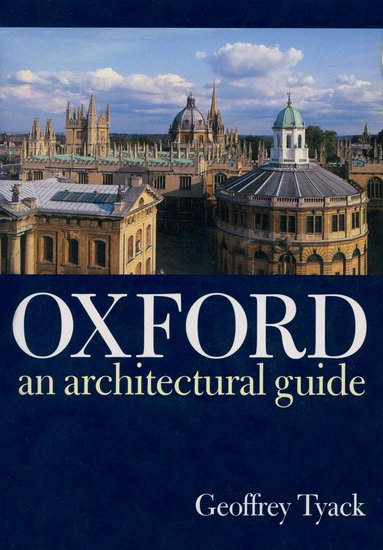 Oxford: An Architectural Guide
Oxford: An Architectural Guideby Geoffrey Tyack
OUP (1998), £16.99, 384 pages
Geoffrey Tyack writes with a fluid style that accesibly conveys a great amount of specific detail of people, places, materials, and more without the reader feeling the least bit overwhelmed. Even the most veteran Oxonophile will gain deeper insight into what buildings were built by (and for) whom, with what money, and how they’ve been adapted over the centuries. A model guide to the architecture of the finest university town in the world.
A thoughtful leader
As newspapers go, the Feudal Times and Reactionary Herald is devilishly difficult to obtain. Its coverage of internal squabbles within the Marxist-Lefebvrist faction of the Communist Party of Great Britain makes for compelling reading and it is likewise to be thanked for its sensitive reporting on the goings-on of various disenfranchised Indian princely families. Alas, I have never discovered whether it is possible to subscribe to this illustrious periodical, and a visit to the City of London address printed on its editorial page revealed only that the building had been bombed out during the Blitz and more recently redeveloped into a giant postmodern office block housing ‘management consultants’.
As is often the case in times of difficulty, it is not in the metropole but in the periphery one finds comfort. I am currently enjoying a few days in Wexford town (or Veisafjǫrðr as the Feudal Times & Reactionary Herald would doubtless call this old Viking settlement in Ireland). This very day I was enjoying a delicious pub lunch — stuffed chicken wrapped in bacon with peas and mash all united by a gravy of optimal viscosity accompanied by a locally brewed Schwarzbier — when I was delighted to discover next to me a copy of the illustrious title left by a previous punter. A few weeks old and already well-thumbed, it nonetheless included this thoughtful editorial regarding the recent Rhodes controversy in Oxford which our readers might, despite its pretentious prose, find interesting:
Ex Africa semper aliquid novii a Roman of old once noted. We have recently and from many quarters heard much criticism of Mr Ntokozo Qwabe — a Rhodes scholar from the late lamented Union of South Africa — concerning his call for the removal of the statue of Mr Cecil Rhodes (quondam Prime Minister of the Cape of Good Hope) from the High Street frontage of Oriel College, an institution much beloved by many of the readers of this newspaper.
As Mr Qwabe is one of those currently enjoying the fruits of Mr Rhodes’s rather typical largesse, he has doubtless left himself open to accusations of hypocrisy and ingratitude. Nonetheless, we believe a certain lassitude and forgiveness is called for in this case as recent utterances pouring forth from his loquacious tongue have proved more amenable hearing to ear-trumpets both feudal and reactionary. For we are informed the young scholar has a new target in his sights: the tricolour flag of the dreaded French Republic. Mr Qwabe has called for it to be banished from the streets and quadrangles of both town and university, deriding this “violent symbol” of a republican regime that has “terrorised innocent lives”. Such a forceful allusion to the regicides of 1793 is to be welcomed firmly.
True to their typical form, the tweeded, begowned, and enscarfed undergraduates of Oxford’s colleges have taken up Mr Qwabe’s plea. Already the blue-white-and-red flag which until recently hung from the Pierre Victoire restaurant in Little Clarendon St has been replaced by a lily banner. It is regrettable, though, that a screening of ‘Le roi danse’ at the School of Modern Languages resulted in intermittent street violence between roving bands of rival Legitimiste and Orleaniste students, egged on by Bonapartist townsfolk from working-class enclaves in Jericho and Cowley. (The biretta of an innocent Oratorian is believed to have been knocked off in the ensuing melee.)
Mr Qwabe may have arrived on these shores with plans for revolt and ‘transformation’ but it is clear that Oxford is having its usual desired effect on this bright young man. Tumult is giving way to torpor, and doubtless this Rhodes scholar will return to the happy land of the assegai and the rondavel a good deal more broad-minded and reactionary. We wish him well.
Diary
It is truly a sad thing for a summer to end, and yet it is an inevitable part of the endless cycle of life. July was full of its annual rites: two weeks in Lebanon and then the traditional festivities associated with the return of the OMV contingent from Lourdes — jugs of Pimm’s at the Scarsdale followed by the manic dinner, drinks, dancing, and smoking at Pag’s late into the night. Miss S. had always avoided the Pag’s part of the festivities, decrying it as a futile attempt to prolong the jollity. She decided to come along this year, however, and enjoyed it so much she stayed well past two in the morning. In fact, I think she was still there when I left.
So it didn’t really seem like summer really kicked off until August. (more…)
Brother Ursus of Blackfriars, Oxford
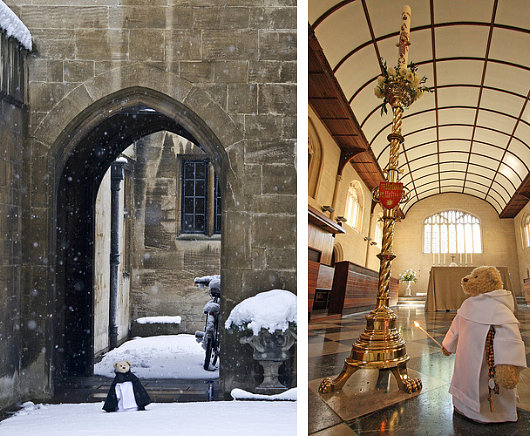
Left, contemplating the winter snow. Right, contemplating how the deuce a bear of his particular stature can light the Easter candle.
Ursus Oxoniensis
Brother Ursus of Blackfriars Hall, Oxford
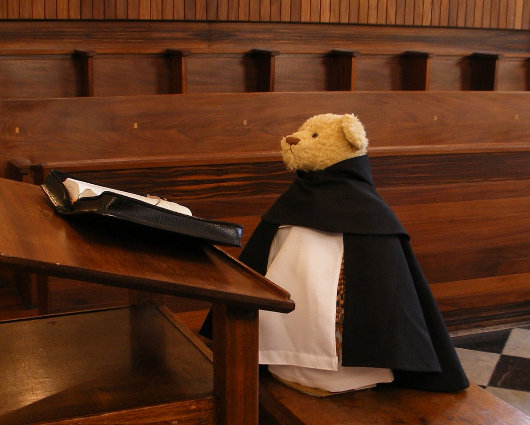
Godzdogz, the blog of the English Dominicans, informs us of the following:
The Dominican order is very inclusive with brothers and sisters from a wide variety of backgrounds. One of the friars who lives in Oxford, Br Ursus, describes what day to day life is like for a Dominican bear.
“I get up at 7.43 every morning for Lauds. This is always a great challenge, especially in winter. Before joining the order, I used to hibernate for 6 months of the year, so it has taken me quite a while to adapt to getting up every day. It’s one of the sacrifices I have to make, but I receive many consolations. As it says in psalm 118 ‘Your promise is sweeter to my taste than honey in the mouth.’ As someone who very much loves honey, I find this imagery delightful, and it’s also very true.
Old Radders
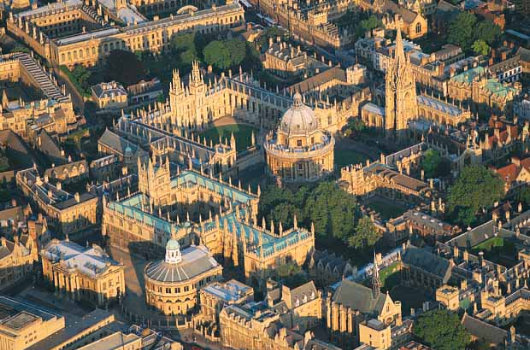
The devil in me, while entirely appreciative of the beauty of Radcliffe Camera, sometimes wonders if the handsome square it is in might be better off without it. What would it look like?
Search
Instagram: @andcusack
Click here for my Instagram photos.Most Recent Posts
- Articles of Note: 11 November 2024 November 11, 2024
- Why do you read? November 5, 2024
- India November 4, 2024
- The Lithe Efficiency of the Old Constitution November 4, 2024
- Waarburg October 2, 2024
Most Recent Comments
Book Wishlist
Monthly Archives
Categories


